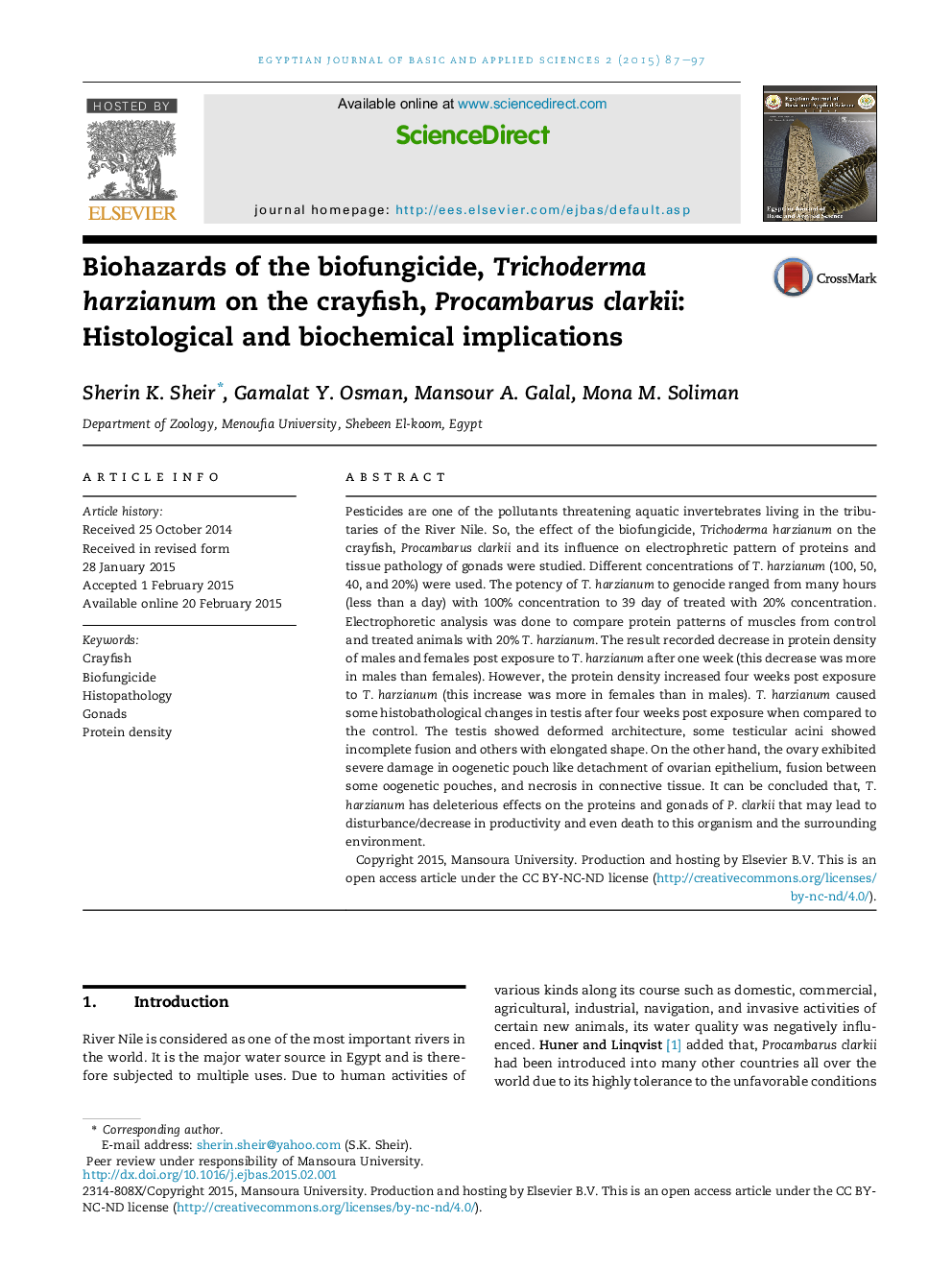| Article ID | Journal | Published Year | Pages | File Type |
|---|---|---|---|---|
| 558982 | Egyptian Journal of Basic and Applied Sciences | 2015 | 11 Pages |
Pesticides are one of the pollutants threatening aquatic invertebrates living in the tributaries of the River Nile. So, the effect of the biofungicide, Trichoderma harzianum on the crayfish, Procambarus clarkii and its influence on electrophretic pattern of proteins and tissue pathology of gonads were studied. Different concentrations of T. harzianum (100, 50, 40, and 20%) were used. The potency of T. harzianum to genocide ranged from many hours (less than a day) with 100% concentration to 39 day of treated with 20% concentration. Electrophoretic analysis was done to compare protein patterns of muscles from control and treated animals with 20% T. harzianum. The result recorded decrease in protein density of males and females post exposure to T. harzianum after one week (this decrease was more in males than females). However, the protein density increased four weeks post exposure to T. harzianum (this increase was more in females than in males). T. harzianum caused some histobathological changes in testis after four weeks post exposure when compared to the control. The testis showed deformed architecture, some testicular acini showed incomplete fusion and others with elongated shape. On the other hand, the ovary exhibited severe damage in oogenetic pouch like detachment of ovarian epithelium, fusion between some oogenetic pouches, and necrosis in connective tissue. It can be concluded that, T. harzianum has deleterious effects on the proteins and gonads of P. clarkii that may lead to disturbance/decrease in productivity and even death to this organism and the surrounding environment.
